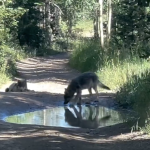New rockfall fence on Vail Pass will be first of its kind in Colorado
Effort is part of a larger project to add an extra lane to eastbound I-70 at mile marker 187
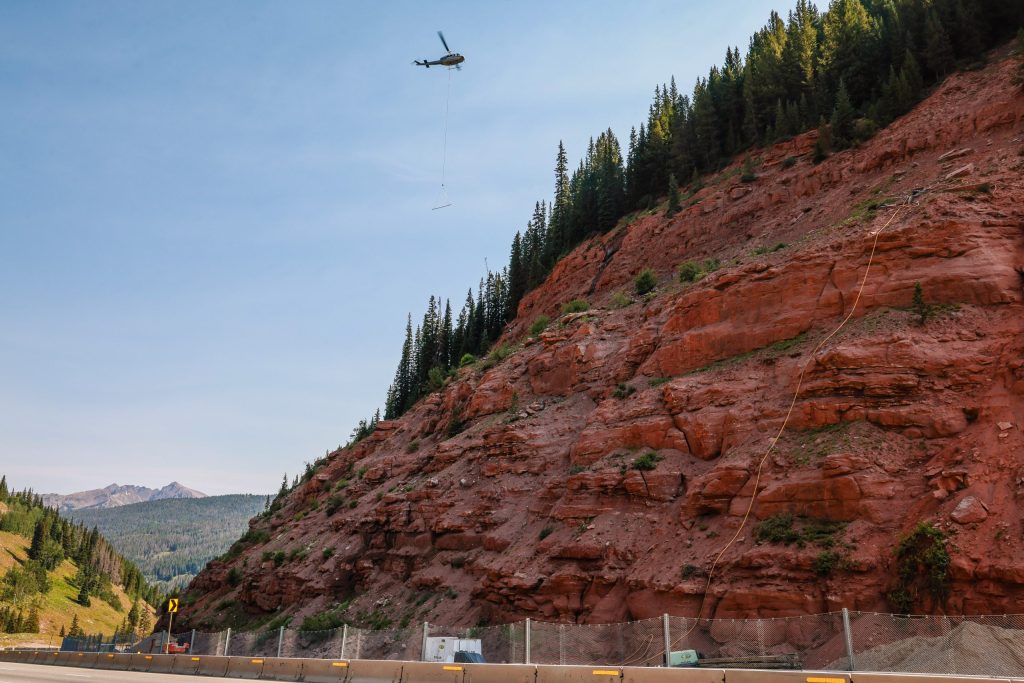
Chris Dillmann/Vail Daily
As CDOT ferried photographers up Vail Pass on Thursday to update the media on the latest developments in the I-70 West Vail Pass Auxiliary Lanes Project, resident engineer John Kronholm said the group got stuck behind a tractor-trailer going 24 mph.
“This third lane, when it’s completed, is going to sell itself,” Kronholm said. “I think it will help drive funding for the rest of the project.”
The rest of the project Kronholm referenced is not just the $325 million I-70 West Vail Pass Auxiliary Lanes Project — which is currently in the process of adding another lane to a portion of eastbound I-70 on Vail Pass — but a subsequent westbound project, which aims to make the highway six lanes wide at various points between mile markers 185 and 190.
But the project is about much more than additional lanes, as Kronholm explained on Thursday when asked why a helicopter is needed at this phase. The six-year project is currently in its fifth year. The overall goal is to improve safety and reduce costly interstate shutdowns, Kronholm said, some of which occur when avalanche mitigation is performed on Vail Pass after big snowstorms. (The most recent planned closure of Vail Pass for avalanche mitigation work occurred on Feb. 18.)
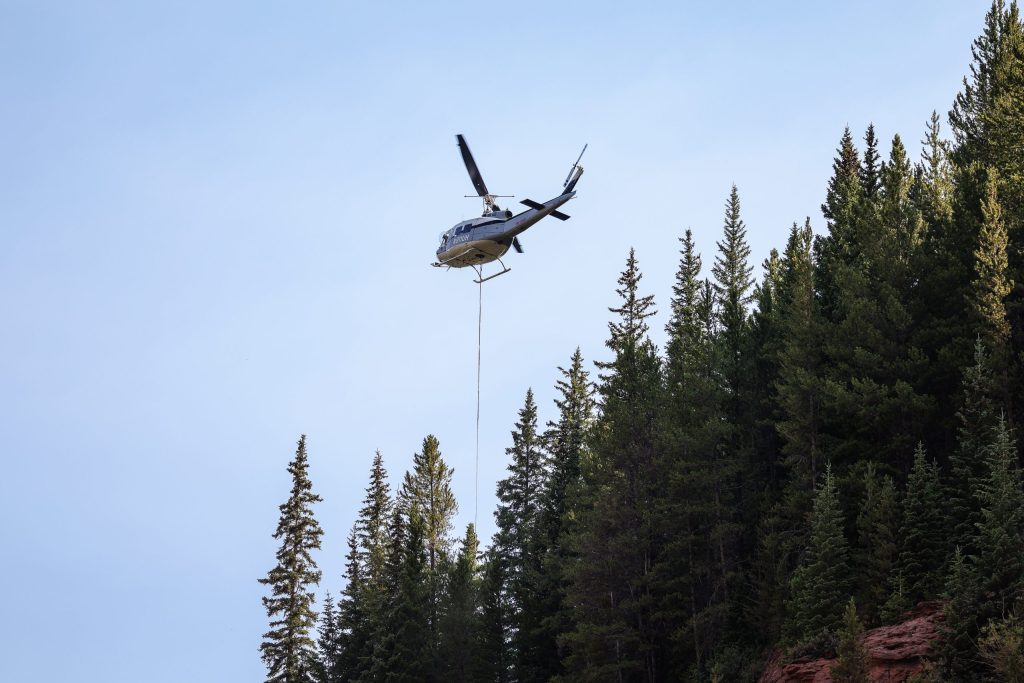
To reduce the need for such closures, CDOT is installing a new kind of avalanche and rockfall barrier, which will require soil nails and concrete platforms installed by helicopter.
“Once they finish all the foundation installation, then we will have traffic holds once again — probably in September — for additional helicopter operations,” Kronhold said. “At that point, the helicopter will bring over all the vertical posts for the avalanche fence, as well as the netting for the fence.”
While funding is tight on the project, additional components have been able to be added along the way. The namesake component is the addition of an extra lane, but Kronholm says that important impetus allowed CDOT to add various wish-list items, which have long been identified as ways to make I-70 more resilient at Vail Pass.
The addition of many of those items — installing wildlife underpasses and cameras, new bridges, the smoothing out of tightly curved and steep sections, water quality enhancements and a runaway truck ramp alteration — started before the project began in 2021.
But some of the project’s accessory features have been added while the project has been underway, including the idea to install an avalanche fence above the interstate at the mile marker 187 section known as the Narrows.
“It’s for passive avalanche mitigation and rockfall,” Kronholm said on Thursday. “Which is a unique application for a fence that really hasn’t been done before in Colorado and possibly the country — to have a fence that’s engineered to handle both static snow loading as well as dynamic rockfall.”
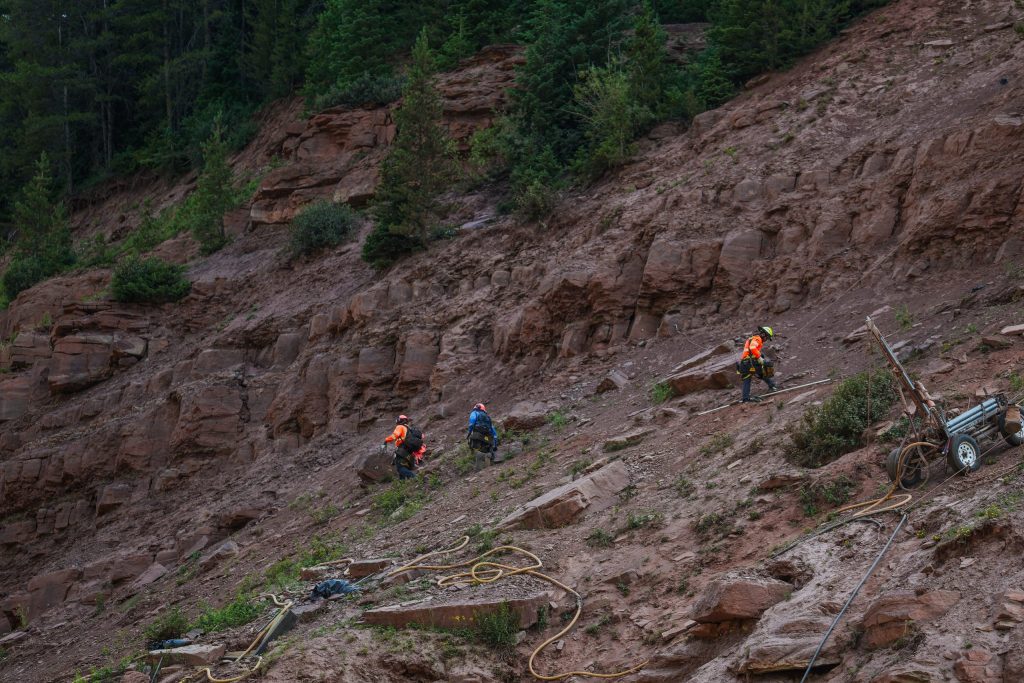
Kronholm said the fence component was added to the project last year, one of many new ingredients that have — along with a hearty dose of inflation — created an especially thick stew. The project’s latest cost estimate of $325 million is more than double the original $140 million price tag.
When the project completed its first add-on feature, a newly designed emergency exit at mile point 182, Gov. Jared Polis, a Vail homeowner himself, visited the site to share the importance of the Vail Pass improvements. Polis cited statistics from 2014 to 2017, saying the pass was closed more than 1,500 hours during that four-year period.
“We know how important it is to keep this highway open and moving,” Polis said. “Whenever Vail Pass is closed for an incident, it costs a lot of money. These safety improvements will reduce the cost of closures, the time in duration of closures going forward, improving the flow of traffic and making Vail Pass safer for motor carriers and for vehicle traffic.”
Kronholm said the addition of the fence is a bit like the new, 1,100-foot-long retaining wall that was completed as part of the I-70 West Vail Pass Auxiliary Lanes Project during the fall of 2023. Long envisioned as an enhancement that could improve safety and reduce closures, it has not been able to be realized until now due to funding and technology limitations.
With the large, flat and round turnaround area atop the previous Highway 6 road alongside I-70 creating a perfect staging area for a helicopter, the work to install the fence can be carried out with relative ease, Kronholm said. The fence idea was always part of CDOT’s larger vision, which “overall is to add a third lane up and down Vail Pass from East Vail to Shine Pass Road, however (the fence) had never been part of this phase,” Kronholm said.
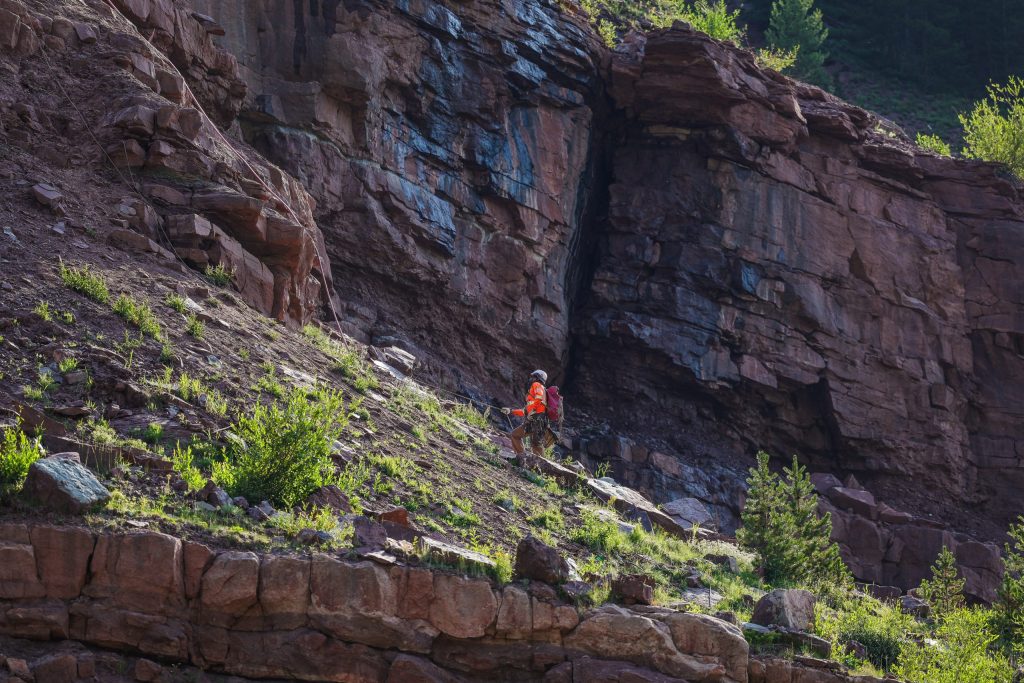
Kronholm said geohazard-specific funding became available at some point last year, allowing his team to include the long-contemplated rockfall fence idea into the I-70 auxiliary lane work.
“You always hear that funding is tight, but it depends on the strings that come attached with the money,” Kronholm said. “In this case, we were able to add the geohazard components into the scope for the project.”
Basalt’s Knous holes out in playoff to win Colorado Open golf tournament
“Right off the club I knew it was going to be pretty good, but gosh, I didn’t even imagine it was going to go in the hole. One bounce and in.”

Support Local Journalism

Support Local Journalism
Readers around Glenwood Springs and Garfield County make the Post Independent’s work possible. Your financial contribution supports our efforts to deliver quality, locally relevant journalism.
Now more than ever, your support is critical to help us keep our community informed about the evolving coronavirus pandemic and the impact it is having locally. Every contribution, however large or small, will make a difference.
Each donation will be used exclusively for the development and creation of increased news coverage.









